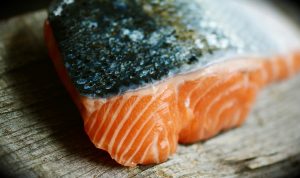16 Ingredients That Can Naturally Lower Blood Pressure
Blood pressure is a critical aspect of cardiovascular health, and maintaining it within a healthy range is essential for overall well-being. While medications are commonly used to manage high blood pressure, there are several natural ingredients that have been shown to help lower blood pressure levels. Let’s explore 16 powerful ingredients that can naturally lower blood pressure and dive deeper into how you can incorporate them into your lifestyle.
Understanding Blood Pressure
Before delving into the ingredients, it’s helpful to understand what blood pressure is and why it matters. Blood pressure is the force of your blood pushing against the walls of your arteries. It’s recorded as two numbers: systolic pressure (when the heart beats) over diastolic pressure (when the heart rests between beats). High blood pressure, or hypertension, increases the risk of heart disease and stroke, making its management crucial for long-term health.
1. Garlic
Garlic contains compounds like allicin that can help relax blood vessels and improve blood flow, leading to lower blood pressure. It is also rich in antioxidants that protect the heart and blood vessels from damage. Incorporating garlic into your diet can be a flavorful way to support heart health.
Practical Tips:
- Cooking: Mince fresh garlic and add it to salad dressings, soups, or marinades.
- Roasting: Roast whole garlic cloves to mellow their flavor and use them as a spread on whole-grain bread.
- Supplements: If you find the taste too strong, garlic supplements are available, but consult with a healthcare provider before starting any new supplement regimen.
2. Olive Oil
Extra virgin olive oil, a staple of the Mediterranean diet, is high in monounsaturated fats and antioxidants that can lower blood pressure and reduce the risk of heart disease.
Practical Tips:
- Salad Dressing: Use olive oil as a base for homemade salad dressings.
- Cooking: Sauté vegetables in olive oil for a heart-healthy side dish.
- Bread Dipping: Mix olive oil with herbs for a delicious bread dip.
3. Turmeric
The active compound in turmeric, curcumin, has powerful anti-inflammatory and antioxidant properties that can help improve blood vessel function and lower blood pressure levels.
Practical Tips:
- Golden Milk: Make a soothing turmeric latte with milk, turmeric, and a pinch of black pepper to enhance absorption.
- Curry: Add turmeric to curries and stews for both flavor and health benefits.
- Smoothies: Blend turmeric into smoothies for an easy nutrient boost.
4. Beetroot
Beetroot is rich in nitrates, which are converted into nitric oxide in the body. Nitric oxide helps relax blood vessels and improve blood flow, leading to lower blood pressure.
Practical Tips:
- Juices: Fresh beet juice is a potent way to consume nitrates.
- Salads: Grate raw beets into salads for a crunchy, nutrient-rich addition.
- Roasting: Roast beetroot to bring out its natural sweetness.
5. Hibiscus Tea
Studies have shown that hibiscus tea can lower both systolic and diastolic blood pressure levels. It is believed to work by relaxing blood vessels and acting as a diuretic.
Practical Tips:
- Brewing: Steep dried hibiscus flowers in hot water for a refreshing tea.
- Iced Tea: Brew hibiscus tea and chill it for a cooling beverage in warmer months.
- Flavoring: Add a touch of honey or a squeeze of lemon for additional flavor.
6. Celery Seed
Celery seed extract has been used traditionally to lower blood pressure. It contains compounds that help relax the muscles in the blood vessels, leading to improved circulation.
Practical Tips:
- Seasoning: Use ground celery seed to season soups, stews, or vegetable dishes.
- Tinctures: Consider celery seed tinctures for a concentrated dose, but consult a healthcare provider first.
7. Fish Oil
Omega-3 fatty acids found in fish oil can help lower blood pressure and reduce inflammation in the body. They are also beneficial for heart health and overall cardiovascular function.
Practical Tips:
- Supplements: Fish oil supplements can be an easy way to increase omega-3 intake.
- Dietary Sources: Incorporate fatty fish like salmon, mackerel, or sardines into your meals.
- Recipes: Try grilled or baked fish with lemon and herbs for a heart-healthy dish.
8. Hawthorn
Hawthorn is a herb that has been used for centuries to support heart health. It works by dilating blood vessels and improving blood flow, which can help lower blood pressure.
Practical Tips:
- Tea: Brew hawthorn berries or leaves into a tea.
- Supplements: Hawthorn supplements are available, but discuss with a healthcare provider before use.
9. Magnesium
Magnesium is an essential mineral that plays a crucial role in regulating blood pressure. It helps relax blood vessels and improve circulation, leading to lower blood pressure levels.
Practical Tips:
- Dietary Sources: Include magnesium-rich foods like almonds, spinach, and black beans in your diet.
- Snacking: Keep a mix of nuts and seeds on hand for a magnesium-rich snack.
- Supplements: Consider magnesium supplements if dietary intake is insufficient, after consulting a healthcare provider.
10. Cinnamon
Cinnamon has been shown to have blood pressure-lowering effects, thanks to its antioxidant and anti-inflammatory properties. It can also help improve insulin sensitivity.
Practical Tips:
- Breakfast: Sprinkle cinnamon on oatmeal or yogurt for a warming flavor.
- Baked Goods: Use cinnamon in baking for both taste and health benefits.
- Tea: Cinnamon sticks can be steeped in hot water for a fragrant tea.
11. Dark Chocolate
Dark chocolate is rich in flavonoids that can help lower blood pressure by improving blood vessel function and reducing inflammation. It is important to choose dark chocolate with a high cocoa content for optimal benefits.
Practical Tips:
- Moderation: Enjoy a small square of dark chocolate daily as a treat.
- Desserts: Use dark chocolate in dessert recipes for a healthier alternative.
- Pairing: Pair dark chocolate with fruit like strawberries or oranges for added antioxidants.
12. Pomegranate
Pomegranate juice is packed with antioxidants that can help lower blood pressure and improve heart health. It is also believed to reduce oxidative stress and inflammation in the body.
Practical Tips:
- Juice: Drink a small glass of pomegranate juice daily.
- Salads: Add pomegranate seeds to salads for a burst of flavor and color.
- Yogurt Topping: Sprinkle pomegranate arils over yogurt for a nutritious breakfast.
13. Ginger
Ginger has been used for its medicinal properties for centuries. It can help lower blood pressure by improving blood circulation and reducing inflammation in the body.
Practical Tips:
- Tea: Brew fresh ginger slices in hot water for a soothing tea.
- Cooking: Grate ginger into stir-fries or soups for a zesty flavor.
- Smoothies: Blend ginger into smoothies for a spicy kick.
14. Quinoa
Quinoa is a versatile whole grain that is high in protein, fiber, and essential nutrients. It can help lower blood pressure by promoting heart health and reducing cholesterol levels.
Practical Tips:
- Base: Use quinoa as a base for salads or grain bowls.
- Side Dish: Serve quinoa as a side dish, seasoned with herbs and spices.
- Breakfast: Try quinoa as a breakfast porridge, topped with fruit and nuts.
15. Oregano
Oregano is a flavorful herb that is rich in antioxidants and compounds that can help lower blood pressure. It also has anti-inflammatory properties that benefit overall cardiovascular health.
Practical Tips:
- Cooking: Add oregano to pasta sauces, soups, or pizza for flavor.
- Infusion: Make oregano oil by steeping fresh oregano in olive oil.
- Herb Mix: Combine with other herbs like basil and thyme for a homemade seasoning blend.
16. Walnuts
Walnuts are a heart-healthy nut that is rich in omega-3 fatty acids, antioxidants, and fiber. They can help lower blood pressure and improve cholesterol levels, making them a valuable addition to a healthy diet.
Practical Tips:
- Snacking: Keep a stash of walnuts for a quick, healthy snack.
- Baking: Include walnuts in baked goods like muffins or bread.
- Salads: Add chopped walnuts to salads for added crunch and nutrition.
Lifestyle Considerations
Incorporating these ingredients into your diet is a great start, but combining them with other healthy lifestyle choices can amplify their benefits. Here are some additional tips:
- Exercise Regularly: Aim for at least 150 minutes of moderate-intensity exercise per week to help manage blood pressure.
- Reduce Sodium Intake: Opt for fresh, unprocessed foods and be mindful of added salt.
- Stress Management: Practice stress-reduction techniques such as meditation, yoga, or deep breathing exercises.
- Maintain a Healthy Weight: Losing excess weight can significantly impact blood pressure levels.
Common Mistakes and How to Avoid Them
- Over-reliance on Supplements: While supplements can be beneficial, they should not replace a balanced diet.
- Ignoring Professional Advice: Always consult with a healthcare provider before making significant dietary changes, especially if you are on medication.
- Inconsistent Habits: Consistency is key. Regularly incorporating these ingredients into your diet will yield the best results.
By understanding and using these natural ingredients, you can take proactive steps toward managing your blood pressure and enhancing your overall health. Remember, small, consistent changes in your diet and lifestyle can make a significant difference over time.


